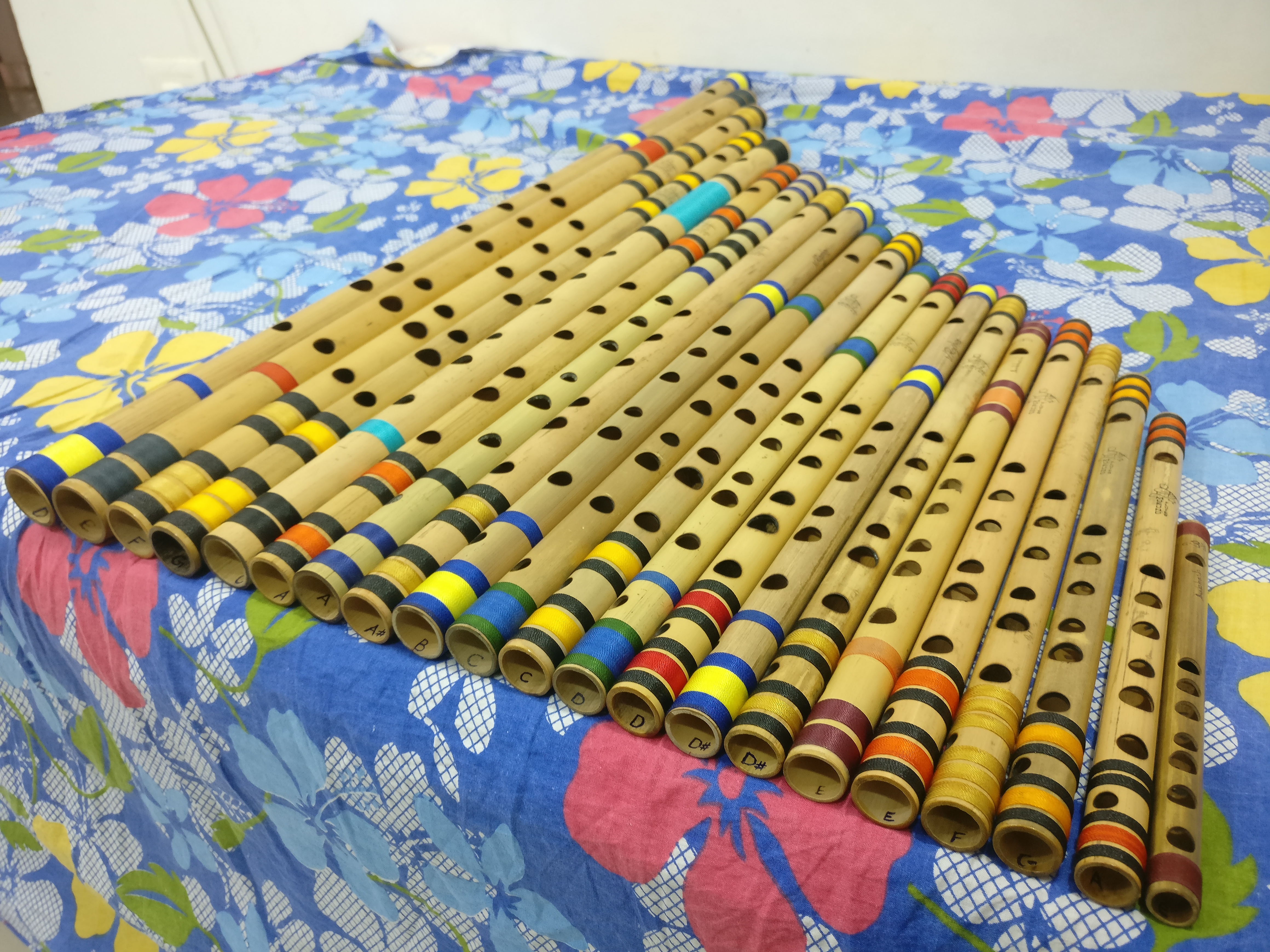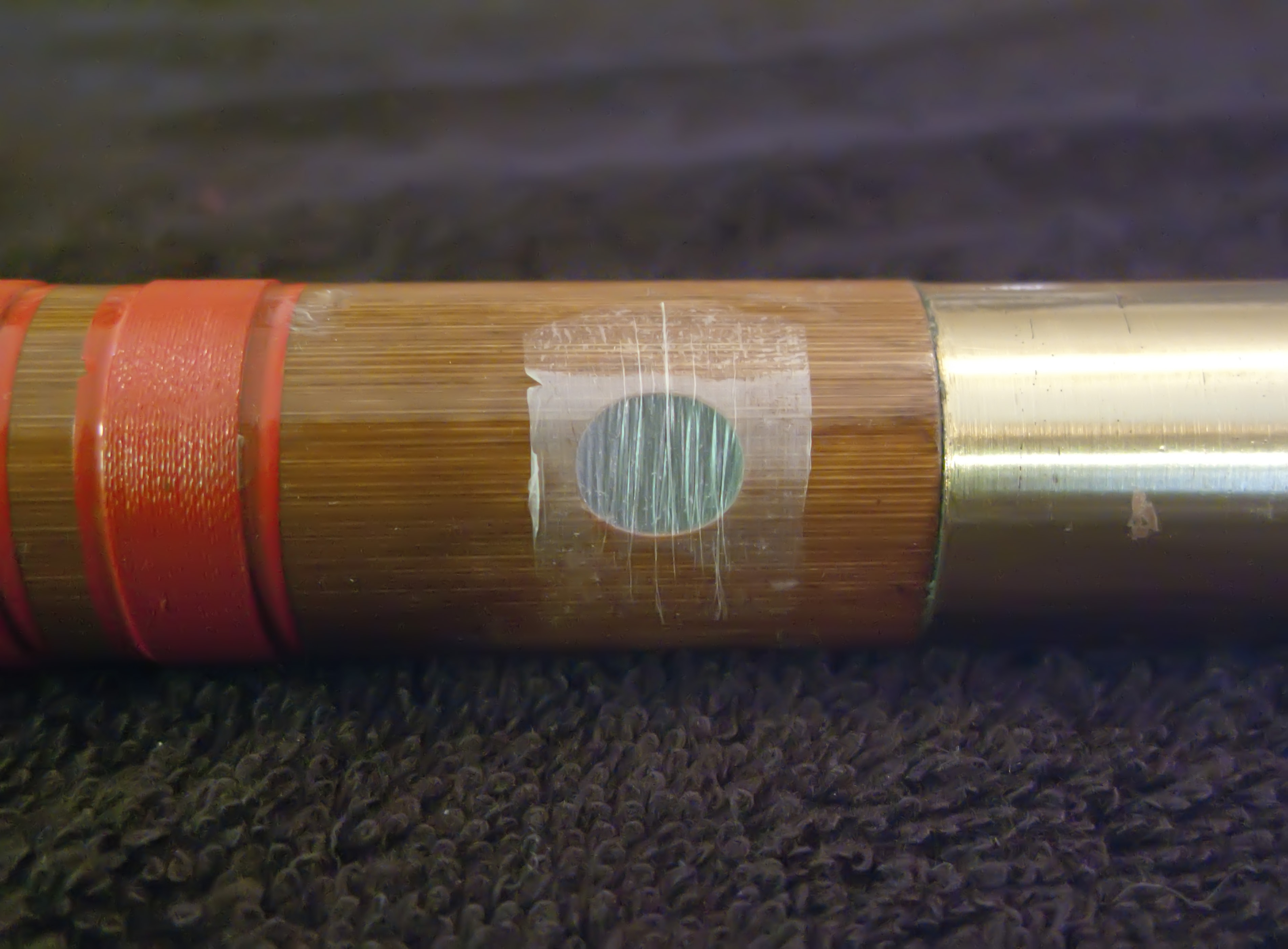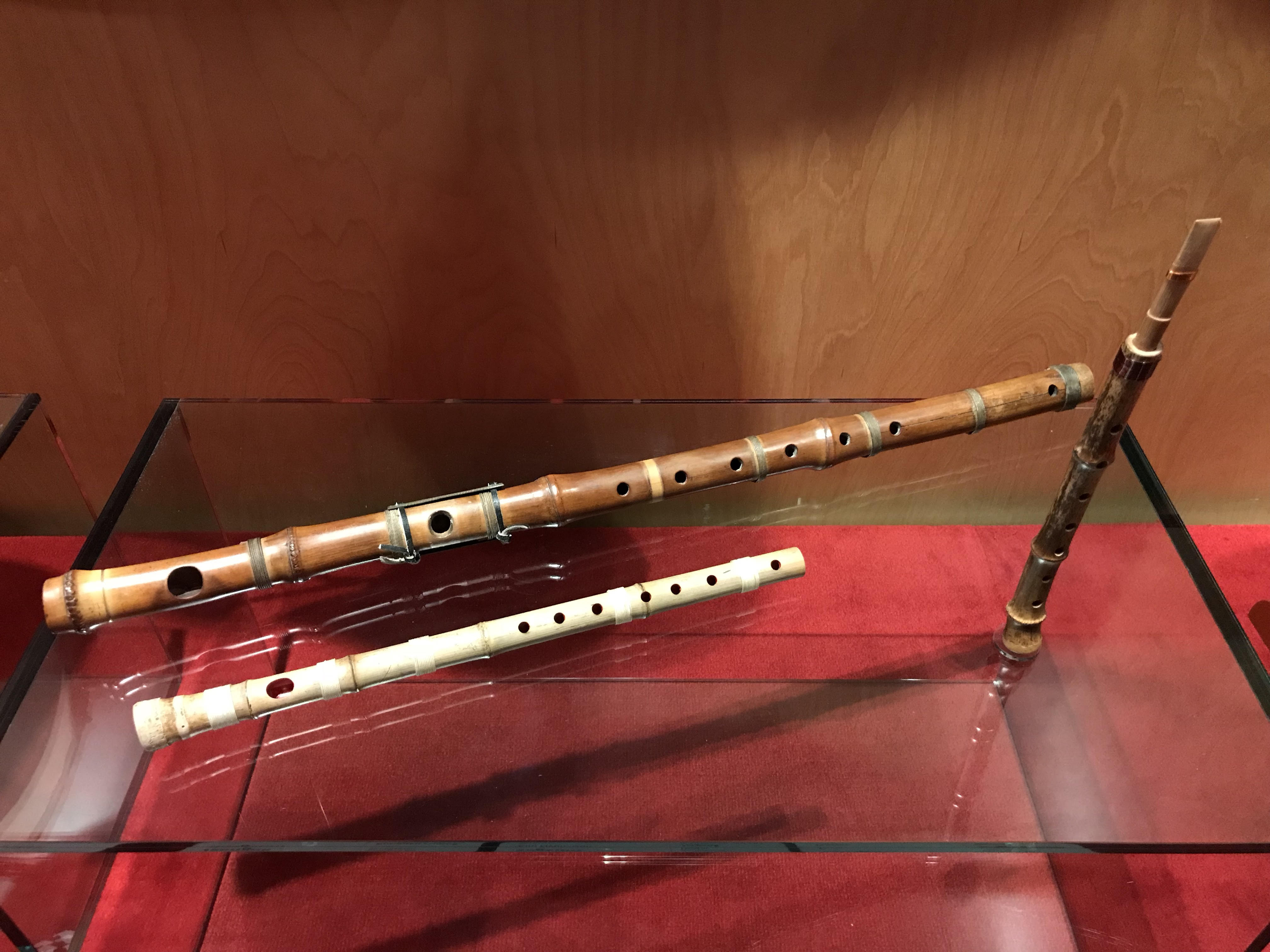|
Transverse Flute
A transverse flute or side-blown flute is a flute which is held horizontally when played. The player blows across the embouchure hole, in a direction perpendicular to the flute's body length. Transverse flutes include the Western concert flute, the Indian classical flutes (the bansuri and the venu), the Chinese dizi, the Western fife, a number of Japanese fue, and Korean flutes such as daegeum, junggeum and sogeum. See also *End-blown flute The end-blown flute (also called an edge-blown flute or rim-blown flute) is a woodwind instrument played by directing an airstream against the sharp edge of the upper end of a tube. Unlike a recorder or tin whistle, there is not a ducted flue v ... {{Flute-stub ... [...More Info...] [...Related Items...] OR: [Wikipedia] [Google] [Baidu] |
Flute
The flute is a family of classical music instrument in the woodwind group. Like all woodwinds, flutes are aerophones, meaning they make sound by vibrating a column of air. However, unlike woodwind instruments with reeds, a flute is a reedless wind instrument that produces its sound from the flow of air across an opening. According to the instrument classification of Hornbostel–Sachs, flutes are categorized as edge-blown aerophones. A musician who plays the flute is called a flautist or flutist. Flutes are the earliest known identifiable musical instruments, as paleolithic examples with hand-bored holes have been found. A number of flutes dating to about 53,000 to 45,000 years ago have been found in the Swabian Jura region of present-day Germany. These flutes demonstrate that a developed musical tradition existed from the earliest period of modern human presence in Europe.. Citation on p. 248. * While the oldest flutes currently known were found in Europe, Asia, too, has ... [...More Info...] [...Related Items...] OR: [Wikipedia] [Google] [Baidu] |
Embouchure
Embouchure () or lipping is the use of the lips, facial muscles, tongue, and teeth in playing a wind instrument. This includes shaping the lips to the mouthpiece of a woodwind instrument or the mouthpiece of a brass instrument. The word is of French origin and is related to the root ', 'mouth'. Proper embouchure allows instrumentalists to play their instrument at its full range with a full, clear tone and without strain or damage to their muscles. Brass embouchure While performing on a brass instrument, the sound is produced by the player buzzing their lips into a mouthpiece. Pitches are changed in part through altering the amount of muscular contraction in the lip formation. The performer's use of the air, tightening of cheek and jaw muscles, as well as tongue manipulation can affect how the embouchure works. Maintaining an effective embouchure is an essential skill for any brass instrumentalist, but its personal and particular characteristics mean that different pedagogues ... [...More Info...] [...Related Items...] OR: [Wikipedia] [Google] [Baidu] |
Perpendicular
In elementary geometry, two geometric objects are perpendicular if they intersect at a right angle (90 degrees or π/2 radians). The condition of perpendicularity may be represented graphically using the ''perpendicular symbol'', ⟂. It can be defined between two lines (or two line segments), between a line and a plane, and between two planes. Perpendicularity is one particular instance of the more general mathematical concept of '' orthogonality''; perpendicularity is the orthogonality of classical geometric objects. Thus, in advanced mathematics, the word "perpendicular" is sometimes used to describe much more complicated geometric orthogonality conditions, such as that between a surface and its '' normal vector''. Definitions A line is said to be perpendicular to another line if the two lines intersect at a right angle. Explicitly, a first line is perpendicular to a second line if (1) the two lines meet; and (2) at the point of intersection the straight angle on one side ... [...More Info...] [...Related Items...] OR: [Wikipedia] [Google] [Baidu] |
Western Concert Flute
The Western concert flute is a family of transverse (side-blown) woodwind instruments made of metal or wood. It is the most common variant of the flute. A musician who plays the flute is called a flautist (in British English), flutist (in American English), or simply a flute player. This type of flute is used in many ensembles, including concert bands, military bands, marching bands, orchestras, flute ensembles, and occasionally jazz bands and big bands. Other flutes in this family include the piccolo, the alto flute, and the bass flute. A large repertory of works has been composed for flute. Predecessors The flute is one of the oldest and most widely used wind instruments. The precursors of the modern concert flute were keyless wooden transverse flutes similar to modern fifes. These were later modified to include between one and eight keys for chromatic notes. "Six-finger" D is the most common pitch for keyless wooden transverse flutes, which continue to be used to ... [...More Info...] [...Related Items...] OR: [Wikipedia] [Google] [Baidu] |
Bansuri
A bansuri is an ancient side blown flute originating from the Indian subcontinent. It is an aerophone produced from bamboo and metal like material used in Hindustani classical music. It is referred to as ''nadi'' and ''tunava'' in the ''Rigveda'' and other Vedic texts of Hinduism. Its importance and operation is discussed in the Sanskrit text ''Natya Shastra''. A ''bansuri'' is traditionally made from a single hollow shaft of bamboo with six or seven finger holes. Some modern designs come in ivory, fiberglass and various metals. The six hole instrument covers two and a half octaves of music. The ''bansuri'' is typically between and in length, and the thickness of a human thumb. One end is closed, and few centimeters from the closed end is its blow hole. Longer ''bansuris'' feature deeper tones and lower pitches. The traditional design features no mechanical keys, and the musician creates the notes they want by covering and uncovering the various finger holes. The ''ban ... [...More Info...] [...Related Items...] OR: [Wikipedia] [Google] [Baidu] |
Venu
The ''venu'' (Sanskrit: ; /मुरळि; ''muraļi'') is one of the ancient transverse flutes of Indian classical music. It is an aerophone typically made from bamboo, that is a side blown wind instrument. It continues to be in use in the South Indian Carnatic music tradition. It is referred to as nadi and tunava in the Rigveda and other Vedic texts of Hinduism. In northern Indian music, a similar flute is called '' bansuri''. In the south, it is also called by various other names such as ''pullanguḻal'' (புல்லாங்குழல்) in Tamil (Tamil Nadu), ''oodakuḻal ''(ഓടകുഴൽ) or '' kurungu kuḻal '' (കുറുന് കുഴൽ) in Malayalam (Kerala) and ''ಕೊಳಲು (koḷalu)'' or ಮುರಳಿ (muraļi) in Kannada (Karnataka) . It is known as ''pillana grōvi'' (పిల్లన గ్రోవి) or ''vēṇuvu'' (వేణువు) in Telugu (Andhra Pradesh & Telangana). It is also called as Carnatic Flute. The ''venu'' i ... [...More Info...] [...Related Items...] OR: [Wikipedia] [Google] [Baidu] |
Dizi (instrument)
The ''dizi'' (, pronounced ), is a Chinese transverse flute. It is also sometimes known as the ''di'' () or ''héngdi'' (), and has varieties including Qudi (), Bangdi (), and Xindi (instrument), Xindi (). It is a major List of Chinese musical instruments, Chinese musical instrument that is widely used in many genres of Music of China, Chinese folk music, Chinese opera, as well as the modern Chinese orchestra. The ''dizi'' is also a popular instrument among the Chinese people as it is simple to make and easy to carry. Most ''dizi'' are made of bamboo, which explains why ''dizi'' are sometimes known by simple names such as Chinese bamboo flute. However, "bamboo" is perhaps more of a Chinese instrument classification like "woodwind" in the West. Northern Chinese ''dizi'' are made from purple or violet bamboo, while ''dizi'' made in Suzhou and Hangzhou are made from white bamboo. ''Dizi'' produced in southern Chinese regions such as Chaozhou are often made of very slender, lightweig ... [...More Info...] [...Related Items...] OR: [Wikipedia] [Google] [Baidu] |
Fife (musical Instrument)
A fife is a small, high-pitched, transverse aerophone, that is similar to the piccolo. The fife originated in medieval Europe and is often used in fife and drum corps, military units, and marching bands. Someone who plays the fife is called a fifer. The word ''fife'' comes from the German , meaning pipe, which comes from the Latin word . The fife is a diatonically tuned instrument commonly consisting of a tube with 6 finger holes and an embouchure hole that produces sound when blown across. Modern versions of the fife are chromatic, having 10 or 11 finger holes that allow any note to be played. On a 10-hole fife, the index, middle and ring fingers of both hands remain in the same positions as on the 6-hole fife, while both thumbs and both pinkies are used to play accidentals. An 11-hole fife has holes positioned similarly but adds a second hole under the right middle finger. Fifes are made primarily of wood, such as blackwood, grenadilla, rosewood, mopane, pink ivory, co ... [...More Info...] [...Related Items...] OR: [Wikipedia] [Google] [Baidu] |
Daegeum
The ''daegeum'' (also spelled ''taegum'', ''daegum'' or ''taegŭm'') is a large bamboo flute, a transverse flute used in traditional Korean music. It has a buzzing membrane that gives it a special timbre. It is used in court, aristocratic, and folk music, as well as in contemporary classical music, popular music, and film scores. And ''daegeum'' has a wide range and has a fixed pitch, so other instruments tune in to the ''daegeum'' when playing together. Smaller flutes in the same family include the ''junggeum'' () and ''sogeum'' (), neither of which today have a buzzing membrane. The three together are known as ''samjuk'' (; literally "three bamboo"), as the three primary flutes of the Silla period. The solo performance called ''daegeum sanjo'' was pronounced an Important Intangible Cultural Properties of Korea by the Cultural Heritage Administration of South Korea in 1971. According to Korean folklore, the ''daegeum'' is said to have been invented when King Sinmun of Silla w ... [...More Info...] [...Related Items...] OR: [Wikipedia] [Google] [Baidu] |
Junggeum
The ''junggeum'' (also spelled ''chunggum'' or ''chunggŭm'') is a medium-sized transverse bamboo flute formerly used in traditional Korean music. Unlike the larger ''daegeum'', it does not have a buzzing membrane (although it did have one in ancient times). It was used in court, aristocratic, and folk music, but has largely died out, being rarely used today. Other flutes in the same family include the ''daegeum'' and ''sogeum''; the three together are known as ''samjuk'' (hangul: 삼죽; hanja: 三 竹; literally "three bamboo"), as the three primary flutes of the Silla period. Both of these are still used in traditional music, as well as in contemporary classical music, popular music, and film scores. The ''junggeum'' currently used in the National Gugak Center is about 65cm long and 1.7cm in diameter. See also *Bamboo musical instruments *Daegeum * Dizi *Music of Korea *Sogeum *Traditional Korean musical instruments Traditional Korean musical instruments comprise a wide ran ... [...More Info...] [...Related Items...] OR: [Wikipedia] [Google] [Baidu] |
Sogeum
The ''sogeum'' (also spelled ''sogum'' or ''sogŭm'') is a small bamboo transverse flute used in traditional Korean music. Unlike the larger ''daegeum'', it does not have a buzzing membrane (although it did have one in ancient times). It is used in court, aristocratic, and folk music, as well as in contemporary classical music, popular music, and film scores. The overall length and thickness are not constant because ''sogeum'' is made of natural bamboo, but it is 40cm long and 2.2cm thick. Other larger flutes in the same family include the medium-sized ''junggeum'' and the large ''daegeum''; the three together are known as ''samjuk'' (hangul: 삼죽; hanja: 三 竹; literally "three bamboo"), as the three primary flutes of the Silla period. The ''sogeum'' has the highest and clearest tone among wind instruments, and is often composed of singular numbers in ensemble, where other wind instruments are composed of multiple instruments. How to play Sogeum is played in the same w ... [...More Info...] [...Related Items...] OR: [Wikipedia] [Google] [Baidu] |







